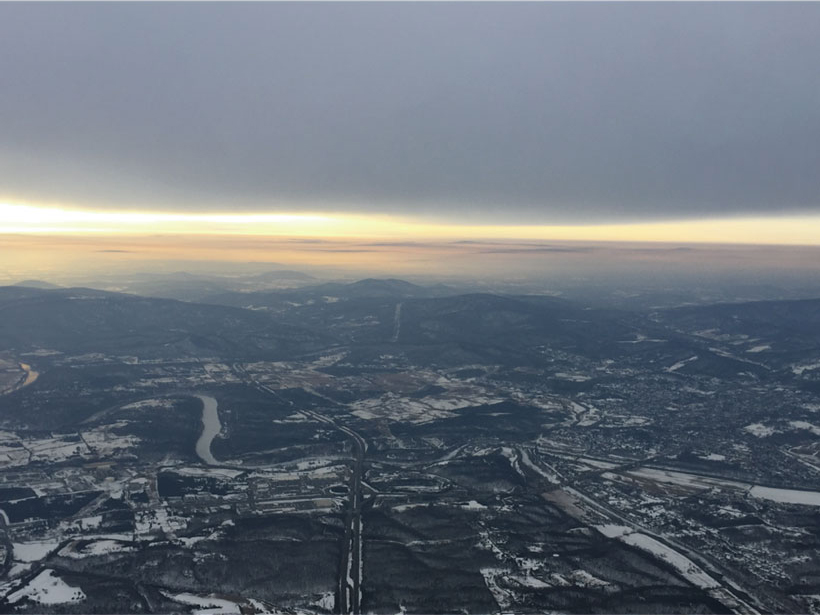Source: Geophysical Research Letters
What’s the haze hanging over the northeastern United States in winter? Traditionally, scientists thought that organic particles in wintertime haze came directly from wood smoke and burning fossil fuels. But more than half the region’s wintertime pollution is actually the product of atmospheric chemistry—secondary particles produced by mingling of airborne chemicals—a new study finds. The more accurate assessment could help air quality managers curb pollution in the region.
Air pollution shifts from season to season. In summer, gases called volatile organic compounds (VOCs) arise from car exhaust, paint thinners, trees, and many other sources, and some of them react with oxidizing chemicals in the atmosphere to form particles called secondary organic aerosols (SOAs). These particles can enter the lungs and bloodstream, causing premature death.
Because sunlight plays a role in the chemical reactions that form SOAs and trees emit more VOCs in summertime, SOAs were thought to be less important in wintertime pollution in the northeastern United States than primary pollutants, such as smoke from wood stoves. The new study by Shah et al. challenges that notion on the basis of data from 13 research flights funded by the National Science Foundation.
Flying at an altitude of 1 kilometer, the team collected samples of air pollution across the northeastern United States and analyzed them with an aerosol mass spectrometer. Most of the organic aerosols the team collected were not produced directly by burning wood or another fuel, such as gasoline, but SOAs. Past atmospheric chemistry models for the region have underestimated SOAs by a factor of 10, the team found.
Although past studies have suggested that SOA pollution is concentrated in urban areas of the Northeast, the team found that the SOAs were present all over the region, including in rural areas. Getting a more detailed picture of where the region’s smog comes from will help pinpoint sources of pollution, information that could be used to improve air quality, they say. (Geophysical Research Letters, https://doi.org/10.1029/2018GL081530, 2019)
—Emily Underwood, Freelance Writer
Citation:
Underwood, E. (2019), A new look at winter air quality in the northeastern U.S., Eos, 100, https://doi.org/10.1029/2019EO121313. Published on 09 May 2019.
Text © 2019. The authors. CC BY-NC-ND 3.0
Except where otherwise noted, images are subject to copyright. Any reuse without express permission from the copyright owner is prohibited.

